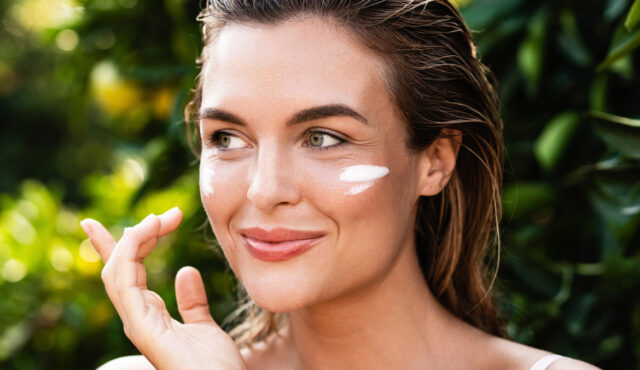Growing up in Australia, I spent much of my time at the beach and in the sun, and I’m ashamed to admit that I spent the majority of my teenage years roasting my skin sans sunscreen. Thankfully, I learned my lesson. Now that I’m well aware of the importance of sun protection (and the severity and prevalence of skin cancer), I’ve swapped my sun-worshipping ways for sunless tanners.
While these types of products are lauded for their ability to deliver a gorgeous faux glow, TikTok recently clued me into a whole new way to use them: As a semi-permanent form of contour known as “tantour.”
What is tantouring?
Contouring—which involves using makeup to sculpt certain facial features—dates back to the 1500s when actors would use chalk and soot to define their cheeks, noses, and brow bones on stage so that people in the back could see their expressions more clearly. While the products sure have evolved over the last five centuries, the idea behind their application stayed the same.
“Contouring is a technique to enhance and define facial features by using different shades of makeup,” shares celebrity makeup artist Courtney Hart. “The purpose of contouring is to create the illusion of a shadow, therefore sculpting the face and making specific areas more defined.”
Tantouring follows the same basic principle, but instead using bronzer, foundation, and concealer to get the look, you use a sunless tanning product. A single application of these formulas can last for a few days (unlike makeup, which washes off when you cleanse your face), which means they can be used to create a semi-permanent contour. In other words, you’ll wake up looking sculpted before you start the rest of your routine.
@indiaexcell The contour around the eyes is 🤌🏼 #sttropeztan @sttropeztan this stuff smells sooo good #tantouring #tantour #beautyhacks #faketan #faketanhacks #faketanroutine #contouringhacks #faketantips #selftannercontour ♬ original sound – Tik Toker
How to tantour
1. Choose the right products
To ensure your tantour looks as natural as possible, you’ll want to opt for a sunless tanner that doesn’t have any glitter or shimmer (the below are all great options). And as far as application goes, your best bet is to use a medium-sized dense brush and/or a BeautyBlender.
2. Prep your skin
“To achieve the most even and seamless tantour, it is very important to have exfoliated and cleansed skin,” says Hart. “Opt for a gentle face scrub or exfoliating cleanser to remove dead skin and leave a fresh canvas for your tanning product.”
While sunless tanner instructions typically suggest only moisturizing dry areas of the skin (like your elbows and knees) two to three hours before applying, things are different with the face. “You want to apply a lightweight oil-free moisturizer to hydrate the skin,” advises Hart. “This will create a barrier between your skin and the tanning product and help create a smooth base and prevent patchiness.”
2. Decide your contour areas
“Determine the areas you want to contour. Usually, this includes the hollows of the cheekbones, temples, jawlines, and sides of the nose,” says Hart. It’s important to remember, everyone’s face shape and preferences will differ, so there’s no one-size-fits-all here—feel free to apply the contour wherever feels right for you.
2. Apply the tanner
“Using a makeup brush, apply a small amount of the tanner to the contour areas,” instructs Hart. “Start light and build the color gradually for a natural effect.” With normal contour, it’s easy to remove and start again, but as tanner becomes semi-permanent almost immediately, start small and add where necessary.
3. Blend and feather
“Blend the self-tanner carefully using gentle tapping and swirling motions to ensure there are no harsh lines or patches,” says the Hart. ‘You want to feather out the edges to create a seamless transition between the contoured areas and the rest of your face.”
4. Consider the lips and eyes
If you’ve got the hang of things and are feeling confident, consider applying the tanner to more than the cheekbones. “To add subtle definition, you can lightly contour just above the crease of your eyelids and between your lash line,” says Hart. “For the lips, apply a tiny amount above the cupid bow and under your lower lip line to create a bit of a shadow.”
5. Allow time to dry
Depending on the brand, your tan will take up to eight hours to dry and develop. From there, it will typically last three to five days, which is slightly less time than these products last on your body as your face is more exposed to the elements and (hopefully!) washed daily.
Shop the best self-tanners for ‘tantouring’
Our editors independently select these products. Making a purchase through our links may earn Well+Good a commission.










